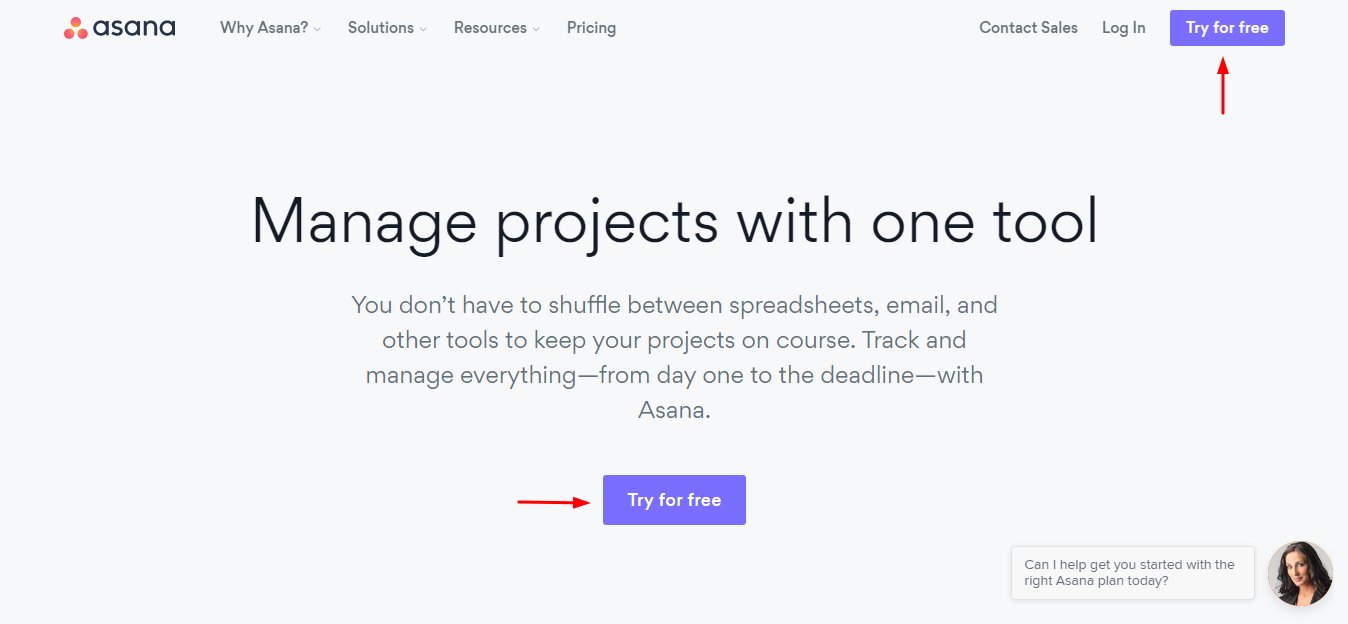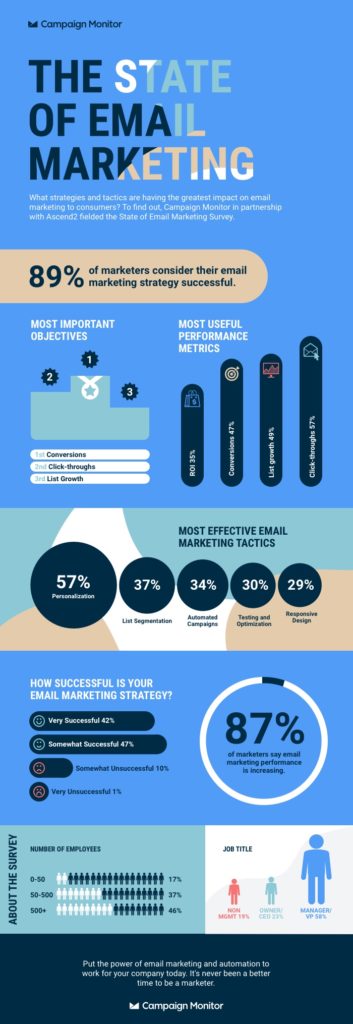Let’s face it. No one likes commercials popping up in the middle of their favorite TV show. Or waking up to an inbox full of salesy emails from brands they never subscribed to.
These mass marketing techniques are no longer as effective. Customers now decide for themselves what to buy, who to buy from and whether they want to be advertised to or not.
And this is exactly why brands are embracing inbound marketing.
Inbound marketing is a business methodology that focuses on drawing in potential customers and visitors instead of interrupting them with unsolicited promotions and content.
Instead of shoving a product in your customers’ faces, you focus on creating valuable content that answers their questions and solves their problems.
So when it’s time to buy, they come to you.
Inbound marketing vs. outbound marketing
Outbound marketing is a traditional type of marketing that involves putting your message out to the masses and hoping that it resonates with your audience.
But consumers are increasingly looking for ways to block out these unsolicited messages with services like spam filtering, ad-blocking and caller ID.
The concept of inbound marketing was introduced in 2005, in response to the failing effectiveness of outbound solutions.
It involves understanding the buyer journey and creating content for each stage, with the aim of turning visitors into customers and promoters of your business.
Not only does this save cost and improve your return on investment (ROI) in the long run, it helps build trust, credibility and loyal relationships with your customers.
By answering their questions and delivering meaningful experiences, you’re showing customers that you genuinely care about them.
Benefits of inbound marketing
While the fruits of inbound marketing might be less “in your face” than other advertising techniques, they are much more valuable to your business in the long run.
Here are some key benefits of inbound marketing:
1. Reduced expense
Apart from being highly ineffective in this digital age, mass marketing is costly and risky.
It’s like putting all your eggs in one basket. Or shooting an (expensive) arrow in the dark and hoping it’ll hit the target.
With a leaner, more focused advertising spend on inbound marketing, your business can save money and experience higher ROI over time.
2. Higher trust and credibility
When you empower customers to do their own research and find you organically, you come across as more trustworthy than a billboard screaming “Buy this now!”
Plus, around 85% of consumers conduct online research before deciding to buy.
Inbound marketing techniques like creating helpful content and leveraging social proof help reduce the amount of risk consumers associate with your brand.
3. Quality traffic and leads
Inbound marketing isn’t just about creating brand awareness. It’s about drawing it the right kind of leads and traffic. With a more targeted and informed approach, you’re able to attract leads who are more likely to be interested in your solutions.
4. Opportunity to learn and evolve
Engaging with customers on social media and listening to their conversations, questions and feedback helps you better understand how to improve your products and services.
Inbound marketing strategy
There are tons of different ways to execute inbound marketing. But if you want to get it right, you need to have a strategy in place.
Creating an inbound marketing strategy involves knowing what your customer wants at a certain point in their journey so you can create content that aligns with their needs and takes them to the next level.
The four stages of an inbound marketing strategy are:
- Attract visitors to your content
- Convert visitors into leads
- Nurture leads into customers
- Delight customers
1. Attract visitors
The first stage of inbound marketing strategy is about attracting potential leads and making them aware of your business and its offerings.
This involves creating content that provides value, and then making sure that it reaches your audience in the best possible way.
Below are three major tactics used in this stage:
Content creation
Creating insightful content and promoting it on the right channels is the most effective way to attract potential leads.
This includes blogging, making videos and publishing case studies, e-books and guides that address the pain points of your audience.
Infographics are another type of content that you can create and share on multiple channels to attract visitors to your site. They’re are highly shareable, engaging and attractively designed.
Here’s an example of an infographic created by email marketing tool Campaign Monitor:
This infographic is designed to attract visitors who are actively searching for the importance or effectiveness of email marketing.
If you don’t have an in-house designer, you can easily create an infographic using an online design tool like Visme.
SEO
Along with creating great content, you need to optimize it for search engines so it shows up in front of the right audience at the right time.
While there are plenty of other factors involved, good SEO starts with conducting keyword research and then incorporating those keywords naturally within your content.
In inbound marketing, quality content and SEO both work together to attract visitors to your website. One simply won’t be as effective without the other.
Social media
Social sharing and engagement should be a crucial part of your inbound marketing strategy. Just like SEO, it can get your content tons of visibility.
Show up and show out. When customers begin their search, discoverability is critical for your business’s credibility. https://t.co/4Ke8KbskEN
— Sprout Social (@SproutSocial) January 22, 2020
Regardless of who your target audience is, they’re likely spending time on multiple social media platforms. Find out which platforms are relevant to you and create a social media marketing strategy to effectively create, share and promote your content there.
The good thing about social media is that there are plenty of tools for engagement.
For example, Instagram Stories is great for visual storytelling and sharing interactive content. Businesses can post how-tos and tutorials, user-generated content, behind-the-scenes footage, quizzes, polls and more.

2. Convert visitors into leads
What do you do with visitors who are interested in your brand or content?
You encourage them to find out more.
This stage involves getting your hands on visitors’ contact information so you can engage with them and show them why they should do business with you.
Here are three tactics used for converting visitors into leads:
Landing pages
Your landing page is what a potential lead sees when they click on your ad or link. You need to optimize this page to encourage visitors to sign up or subscribe. This is where you’ll give visitors a call-to-action (CTA) to convert to potential leads. More on this in a bit.
Create compelling copy and, most of the time, offer something in return, like a free product trial or an e-book or whitepaper. Here’s an example of a beautiful landing page by Shopify:

While this could also be your homepage or any other page on your website, it’s always better to create a specialized landing page that targets a specific keyword.
Opt-in forms
Use opt-in forms to gather information from your visitors, such as their name, email address and other details. To optimize for conversions, make sure your opt-in form is prominent and easy to fill. Less fields or multi-step forms are preferable.
Calls-to-action
A call-to-action (CTA) is a visual way to convince visitors to take action. A compelling CTA is bold, short, clear and action-oriented.
Make sure your CTA is relevant to the text and destination. In the example below, the CTA encourages visitors to try the project management tool for free and leads to a signup page. Imagine if that went to a product overview page instead?

CTAs should ideally be placed multiple times on a lead generation page to drive more conversions.
3. Nurture leads into customers
The whole point of collecting leads is so you can communicate with them and convince them to do business with you.
In this stage, you reach out to potential customers through various channels, and show them exactly how your products or services can benefit them.
Take a look at the three tactics below:
Email marketing
One of the most effective ways to reach out to your leads is through email.
When visitors subscribe to your email list, they want to hear from you. Your job is to find out what they’re looking for and convince them that the answer lies with your business.
Email marketing is also a great way to supplement your social strategy. For example, you can share customer reviews and testimonials with your subscribers, encourage them to follow your social profiles, and even retarget social media ads to interested subscribers.
Customer relationship manager (CRM) and marketing automation
Nurturing leads is a long-term process, and automation can help you save time and increase the effectiveness of your campaigns.
Use CRM and marketing automation software to manage your leads, create automated email workflows and view in-depth insights on their engagement with your communications and business. All of this will help you communicate with leads in the best possible way and increase your chances of converting them into customers.
4. Delight customers
Inbound marketing is not just about getting customers. It’s about making your customers so happy that they turn into promoters of your business.
The more you delight your customers, the more likely they’ll be to leave great reviews and generate positive word-of-mouth. The objective of this stage is to ultimately attract more visitors and potential customers to your business.
Here’s how brands can delight their customers:
Live events and webinars
Live events and webinars are a great way to engage with your customers and keep them updated with news and latest features.
You can host Q&A sessions, product tutorials and more through channels like Instagram Live or Livestorm.
Customer support
Offering excellent customer support is crucial to keeping customers happy and satisfied with your business.
Make sure you address their concerns in a timely manner. You can use chatbots to minimize errors and streamline customer support.
Social listening
Social media is a great place to learn more about your customers and benefit from that information.
While your followers might leave reviews or ask questions on your social profiles, keep in mind there are conversations happening elsewhere. Your followers or customers might sing your praises or have concerns and not tag your social profiles directly. Or there might be buzz around a certain aspect within your industry. With social listening you can always stay up-to-date, respond in a timely manner and take advantage of positive customer experiences.
Surveys
If your customers aren’t leaving reviews on their own, don’t hesitate to ask. Reach out via email, SMS, Facebook or Instagram Messenger and other channels to collect their thoughts and opinions on how to improve your services for their benefit.

Make sure you run short surveys that don’t require too much form-filling.
Get started with inbound marketing for your own business
It’s time to stop blindly throwing promotional messages at people in hopes of finding a lead. Let customers find you with inbound marketing.
Instead of temporarily shooting up your sales, inbound marketing focuses on building long-lasting relationships and a positive brand reputation.
Find out how Sprout Social can help you attract, convert and delight your audience by forming meaningful connections with them. Don’t forget to follow us on Twitter to learn more on social media and inbound marketing strategies.
